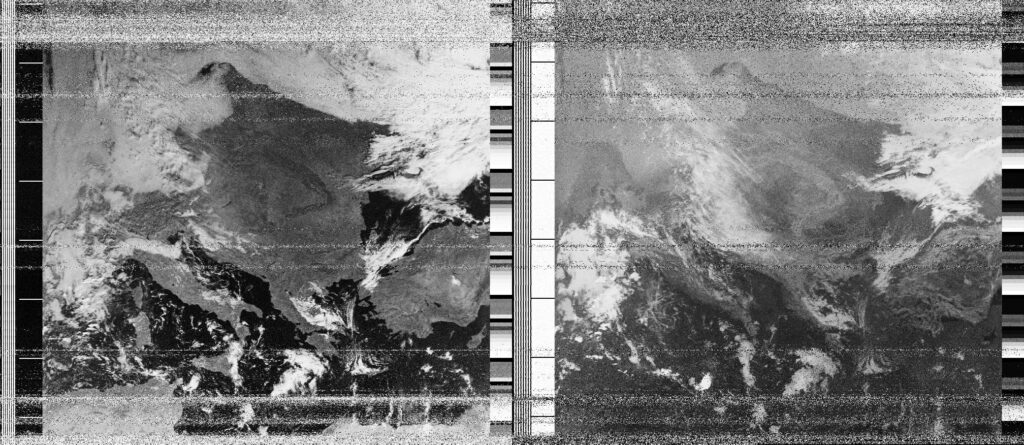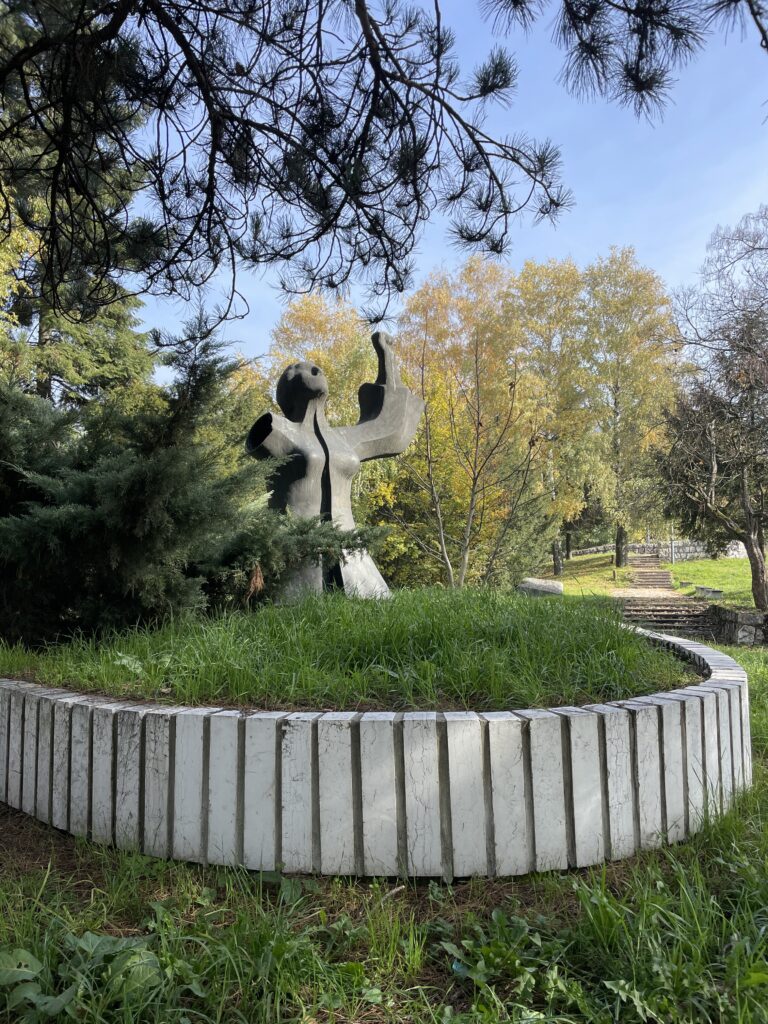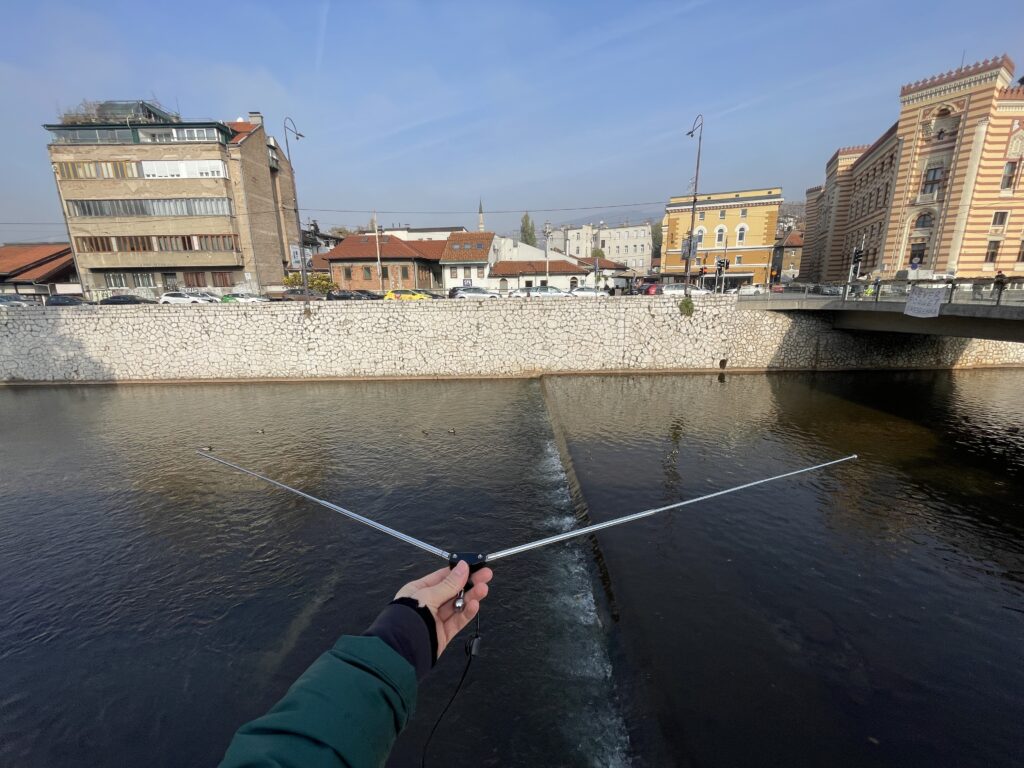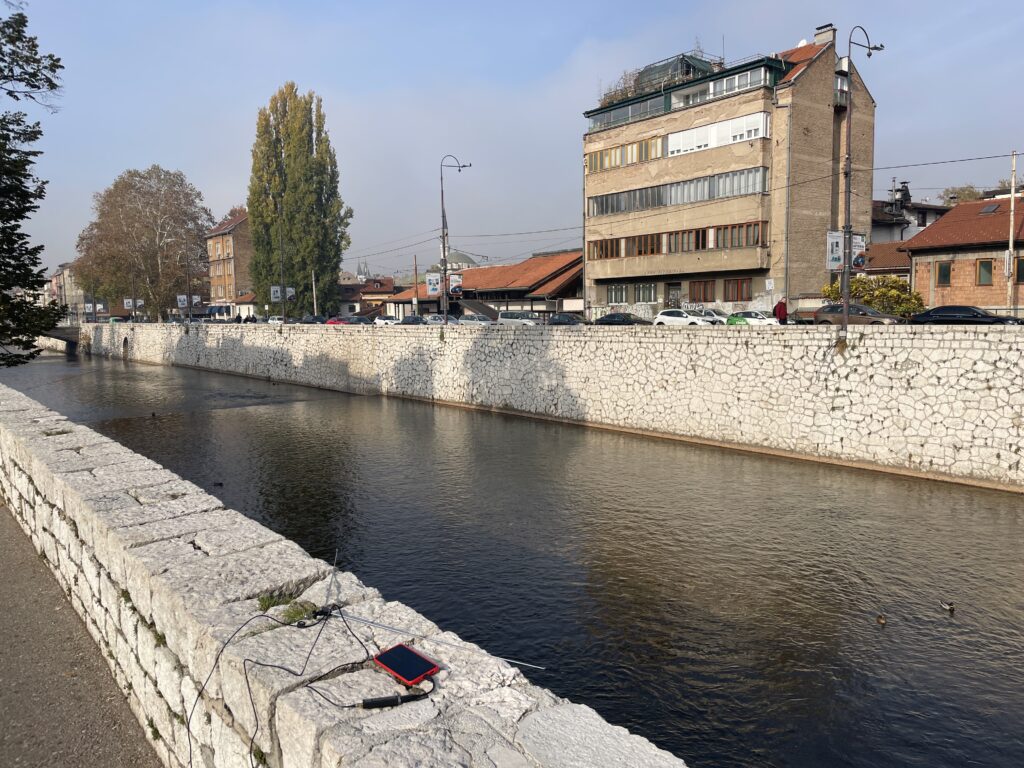Local Date
6 November 2024Local Time
09:40Location
Miljacka River, SarajevoCountry or Territory
Bosnia and HerzegovinaContributor
Sasha EngelmannSatellite
NOAA-19Radio Callsign
Archive ID
Coordinates
Thankfully it is morning now, and the sun is shining on the Maljicka River in Sarajevo. I woke around 1am last night in tears, thinking of all of the places I have seen so far on this trip in the Balkans, and the way my family history is so inscribed in this landscape, a landscape that has felt so much pain. I thought about the memories the landscape holds, that monuments to anti-fascist resistance or tombs of fallen fighters, or memorials to the more recent Yugoslav Wars of the 1990s, only manage to represent partially. Upon properly waking, the news of the US election was shocking, but somehow dulled by the intensity of the last few days. I almost found it darkly humorous, that in the week I am spending engaging with my family’s history, and the very concrete, serious struggle of anti-fascism, a movement for which my great grandfather risked everything, a fascist has been elected to power in my birth country. As the news sunk in later in the day, the dark humour faded and despair set in.
I kept the despair at bay by throwing myself head first into the story of Sarajevo womens’ resistance to authoritarian power, and their role in the communist movement. T and I drove to see a monument to Sarajevo victims of the national liberation war at Vraća Park, on the west of the city. The park itself is not well maintained, with trash and graffiti everywhere, and much of the original stone architecture crumbling. However, at the far end of the park, stands a monument to ‘Women Fighters’ by Sarajevo sculptor Alija Kučukalić. The sculpture is a 2-3 metre tall figure of a woman, from the torso up, wearing a sharp jacket, and gazing to the sky, arms open in a cactus shape and fists clenched. She has a long braid that flows down her back, and her face turns upward. An early sketch for the sculpture that I found online shows a female figure with an agonising face - indeed the original title of the work was “Stratišta” (Executions). While the sculpture is meant to be representative of all fallen women victims and fighters, many believe the sculpture depicts Radojka Lakić, a female leader of the Sarajevo underground communist resistance who was executed at Vraća in September 1941. The sculpture is in poor condition, emblematised by the fact that the right arm has been sawed off. Yet, even with only one arm raised, the figure is striking - a reminder of the immense strength of resistance, and the cost of truly fighting fascism.



